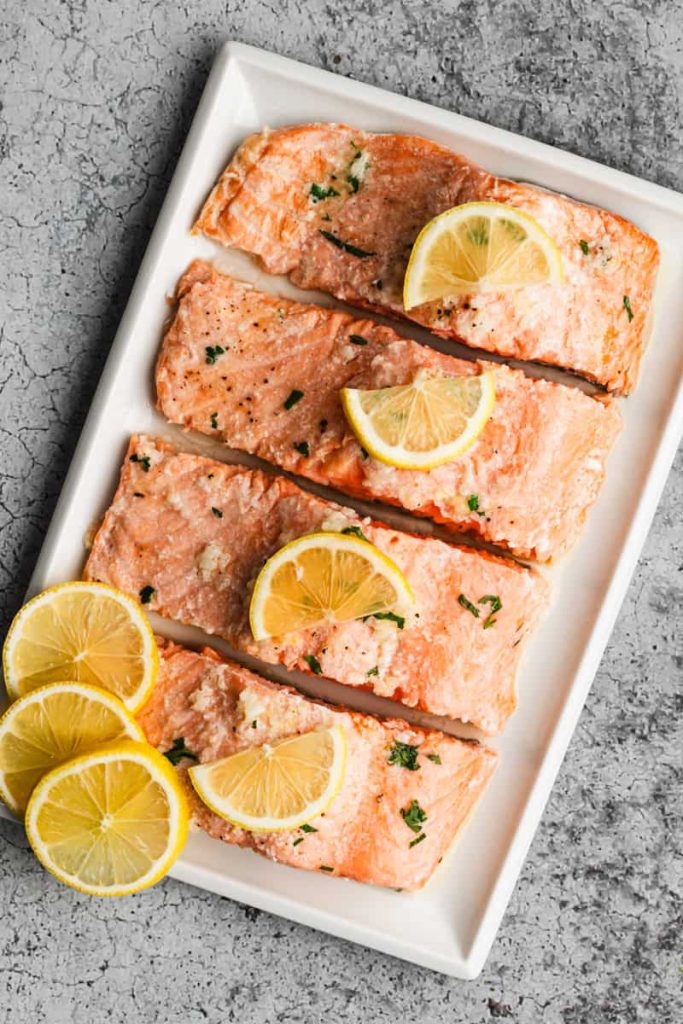
Easy and Tasty Oven-Baked Salmon Recipe
Alex & Sonja: The Culinary Pair Behind A Couple Cooks
Introducing Alex and Sonja Overhiser, the energetic husband-and-wife duo who have transformed their love for cooking into a flourishing online community. As the writers of two celebrated cookbooks and the creators of the well-known website A Couple Cooks, Alex and Sonja have been motivating home cooks since 2010 with their straightforward, seasonal recipes and contagious passion for culinary arts.
What started as a mutual interest has evolved into a comprehensive culinary enterprise. The Overhisers established A Couple Cooks with the intention of sharing their passion for cooking and the happiness it brings to their lives. Over the years, their website has expanded to include thousands of original recipes, each developed with care and meticulousness. Ranging from quick dinners during the week to grand weekend celebrations, Alex and Sonja present a wide selection of dishes suitable for all palates and proficiency levels.
A key characteristic of A Couple Cooks is the couple’s dedication to utilizing fresh, seasonal produce. Their recipes highlight the inherent flavors of ingredients, prompting readers to appreciate the richness of each season. This method not only leads to mouthwatering meals but also encourages a sustainable and thoughtful approach to eating.
Along with recipes, Alex and Sonja share an abundance of cooking tips and meal preparation concepts, streamlining the process for busy individuals and families to relish home-cooked meals. As parents themselves, they recognize the hurdles of juggling work, family, and mealtime, and they aim to provide solutions that ease the task without compromising quality or flavor.
All the content on A Couple Cooks is authored and photographed by Alex and Sonja, ensuring a personal touch that resonates with their followers. Their recipes undergo thorough testing, often with assistance from their children, to guarantee they are both family-friendly and reliable.
Through their cookbooks, website, and social media platforms, Alex and Sonja Overhiser have cultivated a community of culinary enthusiasts who share their zeal for cooking and enjoying quality food. Whether you’re an experienced chef or an amateur in the kitchen, A Couple Cooks has something for everyone, encouraging you to explore the delight of cooking alongside Alex and Sonja.

Loaded Cheese Fries topped with Extras
Alex & Sonja Overhiser: The Culinary Partners Behind A Couple Cooks
Introducing Alex and Sonja Overhiser, the energetic pair who have transformed their love for cooking into a flourishing online community. As writers of two celebrated cookbooks and the creators of the well-loved website A Couple Cooks, they have been motivating home chefs globally since 2010. With an emphasis on straightforward, seasonal dishes, Alex and Sonja have developed a platform that honors the pleasure of cooking and the significance of enjoying meals with loved ones.
The journey of Alex and Sonja began with a common passion for food and a goal to make cooking approachable for all. Their website, A Couple Cooks, commenced as a means to chronicle their culinary experiences and has since evolved into a thorough guide for home cooks. The site showcases thousands of unique recipes, all crafted with care and precision. From hearty breakfasts to fulfilling dinners, each dish is created to be both tasty and feasible, regardless of your culinary skills.
Alongside their vast recipe archive, Alex and Sonja provide an abundance of cooking tips and meal planning suggestions. Their practical insights assist busy families in overcoming the hurdles of putting together healthy, home-cooked meals. As busy parents themselves, they recognize the necessity of efficiency in the kitchen and aim to offer solutions that render meal preparation simpler and more enjoyable.
Another vital aspect of A Couple Cooks is photography. Every recipe is paired with breathtaking visuals that encapsulate the essence of the dish. Both Alex and Sonja are accomplished photographers, and their photos not only highlight the allure of the food but also motivate readers to experiment with new recipes and techniques.
In addition to the website, Alex and Sonja have penned two cookbooks that delve deeper into their culinary philosophy. These works provide readers with an in-depth look at their cherished recipes and cooking approaches, offering inspiration for crafting unforgettable meals at home.
At the core of Alex and Sonja’s endeavors is a dedication to nurturing a passion for cooking and uniting people through food. Their recipes extend beyond merely nourishing the body; they aim to enrich the soul and forge connections around the dinner table. Whether you’re a seasoned chef or a novice, A Couple Cooks serves as an invaluable resource for anyone eager to embrace the delight of cooking.

The Reason Why This Beloved Bourbon Is Considered the âBest in the Worldâ

âIâd buy it for the bottle alone.â
READ MORE…
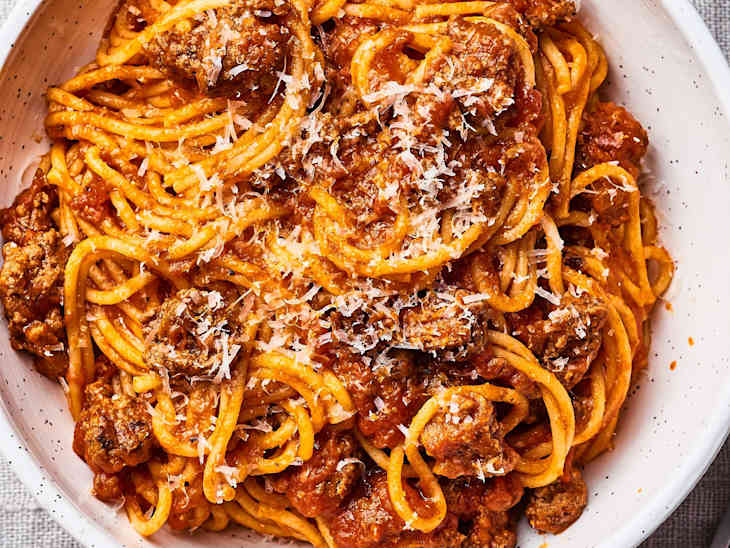
We Asked 3 Chefs to Name the Best Jarred Spaghetti Sauce, and They All Said the Same Thing
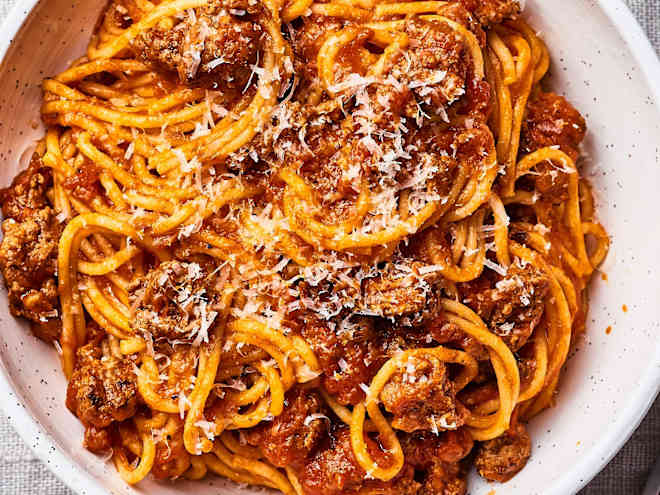
Itâs all about that first ingredient.
READ MORE…
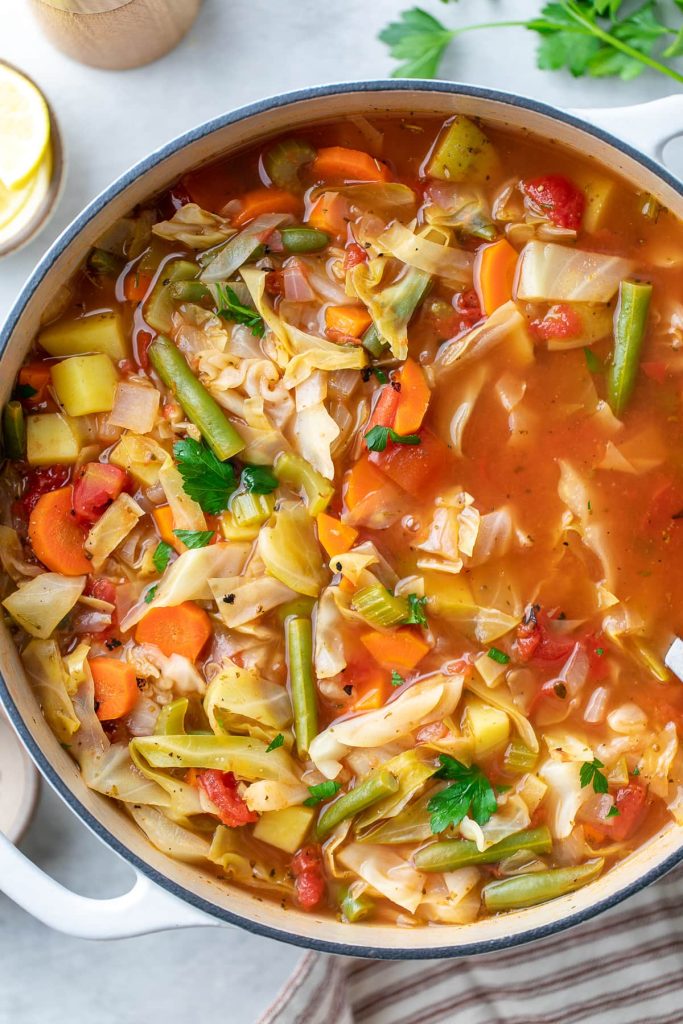
Affordable Comforting Cabbage Soup Recipe
### About the Author: Holly Nilsson
Holly Nilsson is the mastermind behind Spend With Pennies, a site committed to presenting simple and comforting recipes designed for everyday cooking. With a strong passion for cherished flavors and straightforward cooking methods, Holly inspires busy home cooks to create delectable meals that are both attainable and enjoyable. Her philosophy highlights the significance of hearty, homemade food that can be shared with family and friends.
Alongside her contributions to Spend With Pennies, Holly has penned “Everyday Comfort,” a cookbook intended to motivate readers with an even broader selection of hearty recipes that inspire warmth and nostalgia. Her cooking philosophy centers on making the culinary experience delightful and hassle-free, so anyone can prepare unforgettable meals without complications.
For those eager to discover more of Holly’s culinary delights, you can explore additional articles and recipes on her website.
#### Follow Holly on Social Media:
– [Pinterest](https://www.pinterest.com/spendpennies/)
– [Facebook](https://www.facebook.com/ispendwithpennies/)
– [Twitter](http://spendpennies)
– [Instagram](https://www.instagram.com/spendpennies/)

Easy and Tasty Oven-Baked Salmon Recipe
Alex & Sonja: The Culinary Pair Behind A Couple Cooks
Introducing Alex and Sonja Overhiser, the energetic husband-and-wife duo who have transformed their love for cooking into a flourishing online community. As the writers of two celebrated cookbooks and the creators of the well-known website A Couple Cooks, Alex and Sonja have been motivating home cooks since 2010 with their straightforward, seasonal recipes and contagious passion for culinary arts.
What started as a mutual interest has evolved into a comprehensive culinary enterprise. The Overhisers established A Couple Cooks with the intention of sharing their passion for cooking and the happiness it brings to their lives. Over the years, their website has expanded to include thousands of original recipes, each developed with care and meticulousness. Ranging from quick dinners during the week to grand weekend celebrations, Alex and Sonja present a wide selection of dishes suitable for all palates and proficiency levels.
A key characteristic of A Couple Cooks is the couple’s dedication to utilizing fresh, seasonal produce. Their recipes highlight the inherent flavors of ingredients, prompting readers to appreciate the richness of each season. This method not only leads to mouthwatering meals but also encourages a sustainable and thoughtful approach to eating.
Along with recipes, Alex and Sonja share an abundance of cooking tips and meal preparation concepts, streamlining the process for busy individuals and families to relish home-cooked meals. As parents themselves, they recognize the hurdles of juggling work, family, and mealtime, and they aim to provide solutions that ease the task without compromising quality or flavor.
All the content on A Couple Cooks is authored and photographed by Alex and Sonja, ensuring a personal touch that resonates with their followers. Their recipes undergo thorough testing, often with assistance from their children, to guarantee they are both family-friendly and reliable.
Through their cookbooks, website, and social media platforms, Alex and Sonja Overhiser have cultivated a community of culinary enthusiasts who share their zeal for cooking and enjoying quality food. Whether you’re an experienced chef or an amateur in the kitchen, A Couple Cooks has something for everyone, encouraging you to explore the delight of cooking alongside Alex and Sonja.
Read More
Loaded Cheese Fries topped with Extras
Alex & Sonja Overhiser: The Culinary Partners Behind A Couple Cooks
Introducing Alex and Sonja Overhiser, the energetic pair who have transformed their love for cooking into a flourishing online community. As writers of two celebrated cookbooks and the creators of the well-loved website A Couple Cooks, they have been motivating home chefs globally since 2010. With an emphasis on straightforward, seasonal dishes, Alex and Sonja have developed a platform that honors the pleasure of cooking and the significance of enjoying meals with loved ones.
The journey of Alex and Sonja began with a common passion for food and a goal to make cooking approachable for all. Their website, A Couple Cooks, commenced as a means to chronicle their culinary experiences and has since evolved into a thorough guide for home cooks. The site showcases thousands of unique recipes, all crafted with care and precision. From hearty breakfasts to fulfilling dinners, each dish is created to be both tasty and feasible, regardless of your culinary skills.
Alongside their vast recipe archive, Alex and Sonja provide an abundance of cooking tips and meal planning suggestions. Their practical insights assist busy families in overcoming the hurdles of putting together healthy, home-cooked meals. As busy parents themselves, they recognize the necessity of efficiency in the kitchen and aim to offer solutions that render meal preparation simpler and more enjoyable.
Another vital aspect of A Couple Cooks is photography. Every recipe is paired with breathtaking visuals that encapsulate the essence of the dish. Both Alex and Sonja are accomplished photographers, and their photos not only highlight the allure of the food but also motivate readers to experiment with new recipes and techniques.
In addition to the website, Alex and Sonja have penned two cookbooks that delve deeper into their culinary philosophy. These works provide readers with an in-depth look at their cherished recipes and cooking approaches, offering inspiration for crafting unforgettable meals at home.
At the core of Alex and Sonja’s endeavors is a dedication to nurturing a passion for cooking and uniting people through food. Their recipes extend beyond merely nourishing the body; they aim to enrich the soul and forge connections around the dinner table. Whether you’re a seasoned chef or a novice, A Couple Cooks serves as an invaluable resource for anyone eager to embrace the delight of cooking.
Read More
The Reason Why This Beloved Bourbon Is Considered the âBest in the Worldâ

âIâd buy it for the bottle alone.â
READ MORE…
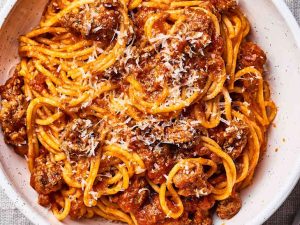
We Asked 3 Chefs to Name the Best Jarred Spaghetti Sauce, and They All Said the Same Thing

Itâs all about that first ingredient.
READ MORE…
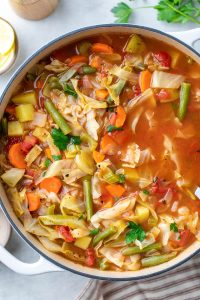
Affordable Comforting Cabbage Soup Recipe
### About the Author: Holly Nilsson
Holly Nilsson is the mastermind behind Spend With Pennies, a site committed to presenting simple and comforting recipes designed for everyday cooking. With a strong passion for cherished flavors and straightforward cooking methods, Holly inspires busy home cooks to create delectable meals that are both attainable and enjoyable. Her philosophy highlights the significance of hearty, homemade food that can be shared with family and friends.
Alongside her contributions to Spend With Pennies, Holly has penned “Everyday Comfort,” a cookbook intended to motivate readers with an even broader selection of hearty recipes that inspire warmth and nostalgia. Her cooking philosophy centers on making the culinary experience delightful and hassle-free, so anyone can prepare unforgettable meals without complications.
For those eager to discover more of Holly’s culinary delights, you can explore additional articles and recipes on her website.
#### Follow Holly on Social Media:
– [Pinterest](https://www.pinterest.com/spendpennies/)
– [Facebook](https://www.facebook.com/ispendwithpennies/)
– [Twitter](http://spendpennies)
– [Instagram](https://www.instagram.com/spendpennies/)

The Bite-Size Snack My Dad Eats Every Day (Theyâre Always in His Pantry!)

I have a favorite, too!
READ MORE…
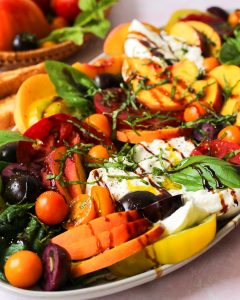
Burrata Cheese Salad with Ripe Tomatoes and Basil
Let’s give a cheer for burrata cheese! I always choose burrata whenever it’s available on restaurant menus, and we’ve enjoyed some amazing combinations this summer. I can’t resist the unique textures of burrata—it resembles fresh mozzarella on the outside, but is delightfully soft and creamy within.
For this recipe, I created a classic summertime burrata salad featuring fresh tomatoes. Pair it with crostini or a crusty loaf of bread to turn it into an appetizer. This burrata dish can be prepared in just 15 minutes, believe it or not, and it’s truly a showstopper.
I aimed to keep it straightforward while making it taste exceptional, so I drew inspiration from my Easy Tomato Salad and Tomato Basil Bruschetta. I chose a mix of cherry tomatoes and sun-dried tomatoes for added flavor, along with freshly toasted pine nuts for a savory touch. It’s not complete without a drizzle of rich olive oil, tangy balsamic vinegar, and a sprinkle of fresh basil. I hope it becomes one of your favorite go-to recipes!
What is Burrata?
Burrata is an exquisitely rich and creamy type of fresh mozzarella. It appears like a standard mozzarella ball on the outside. The interior contains stracciatella, a decadent blend of cream and mozzarella curds. It’s milky and delightful.
Burrata can be crafted from buffalo milk or cow milk. Buffalo milk is more traditional and delivers a brighter, slightly tangy flavor, while cow’s milk is subtler and may taste more familiar. Either option is great for this recipe.
Look for burrata near the fresh mozzarella in well-stocked grocery stores such as Whole Foods. Use it quickly, especially after opening the package—it’s stored in water and doesn’t preserve well like hard cheeses.
Serve burrata at room temperature for optimal flavor, or anywhere from lightly chilled to slightly warmed.
Burrata Serving Suggestions
Burrata complements the Italian flavors highlighted in this recipe: ripe tomatoes, basil (including pesto), balsamic vinegar, olive oil, and pine nuts or pistachios. If you’re not in the mood for tomatoes, substitute them with fruits like sliced peaches, plums, cherries, or cantaloupe.
Present this burrata dish as a salad or appetizer. It pairs well with most summertime meals, from relaxed cookouts to elegant dinner parties. Enhance your meal with any of these summer options:
More Burrata Recipes
Check out my Caprese Salad with Burrata, which showcases heirloom tomatoes. Burrata is a great substitute for fresh mozzarella balls, as long as the recipe doesn’t require cooking the mozzarella. Try my panzanella with torn pieces of burrata instead of mozzarella for an exciting twist!
You can add burrata to pizza, but wait to include torn burrata until the pizza is fully baked, or add it in the final minute to warm it. If it melts entirely, it loses the contrast of the creamy center and turns into a melty, unpredictable blob of mozzarella. Try swapping the mozzarella in my Margherita Pizza or Arugula-Almond Pesto Pizza with torn burrata, or serve it on Grilled Pizza.
Please share how your burrata turns out in the comments! I love hearing from you.
Burrata with Tomatoes and Basil
This burrata salad recipe features tomatoes, basil, and pine nuts, finished with a drizzle of balsamic vinegar and olive oil. It’s irresistible and ready in 15 minutes. Serve it as a salad or appetizer with crostini or crusty bread. Recipe yields 4 to 6 servings.
Instructions:
1. If using pine nuts: In a small skillet over medium-low heat, warm the pine nuts until they’re fragrant and lightly golden on the edges, about 3 to 5 minutes, stirring frequently (don’t allow them to burn!). Transfer them to a bowl to cool.
2. In a shallow serving bowl, mix the cherry tomatoes, sun-dried tomatoes, basil, and garlic. Add 1 tablespoon of olive oil and 1 teaspoon of vinegar, and stir to combine all ingredients.
3. Carefully tear open each ball of burrata and gently place them into the center of the tomato mixture. Drizzle the burrata with the remaining 1 teaspoon of olive oil and 1 teaspoon of balsamic vinegar. Sprinkle the pine nuts throughout the dish, followed by some reserved basil leaves and a dash of black pepper. Add a pinch of flaky salt over the cheese, if desired.
4. Serve with crostini or crusty bread on the side, if applicable. This burrata tastes best the same day it’s made, but leftovers can be stored in the refrigerator for several days, covered.
Notes:
Switch it up: Replace half of the tomatoes with a large sliced peach. Or for a fruitier twist, substitute peaches, nectarines, or cherries for the tomatoes entirely (about
Read More
The Secret to Café-Quality Coffee Without Leaving Your Kitchen

If your mornings are anything like mine, coffee isn’t optional; it’s essential. But here’s the thing: not all coffee vibes are created equal. Some mornings call for a strong, bold shot of espresso. Others demand a smooth, frothy latte. And some days (okay, all days), all we want is an icy cold brew that doesn’t take all day to steep.
READ MORE…
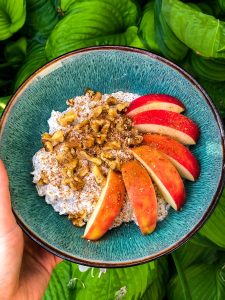
Overnight Oats with Apple and Cinnamon Taste
These overnight oats with apple and cinnamon are a tasty, whole-grain option for a healthy breakfast! This simple prep-ahead recipe brings together sweet-tart apples, aromatic cinnamon, and chewy oats for an excellent morning dish.
I’ve been preparing overnight oats for a long time, but this apple cinnamon variation has swiftly become a favorite in my household! The sweet-tart apple pieces contribute wonderful texture, and the cinnamon elevates the warm flavors. My son instantly requested I prepare another batch!
When I envision the perfect healthy breakfast that can be made ahead, these apple cinnamon overnight oats fulfill every requirement. I appreciate that this recipe serves two, making it ideal for pairs or for preparing meals the night before (plus, it’s simple to double).
Advice for the ideal apple cinnamon overnight oats
Through recipe trials, I’ve found a few essential tips that make these apple cinnamon overnight oats utterly delightful:
– Select the appropriate apple type. I prefer crisp, tart apples such as Pink Lady, Honeycrisp, or Granny Smith because they maintain their texture throughout the night without turning mushy. If you know me, you’ll realize I’m a big fan of Pink Lady: it’s my top pick here!
– Don’t omit the chia seeds. That half tablespoon may seem minimal, but chia seeds are vital for holding everything together and achieving a creamy consistency (without being overly gooey — which is my pet peeve!).
– Allow them to soak for the full time (or skip it!). These easy overnight oats are technically ready after 2 hours: I actually find them tasty right away! However, they are meant to rest in the fridge overnight, allowing the flavors to combine even more.
Highlight ingredient: rolled oats
Much like in my favorite oatmeal recipe, I always utilize old-fashioned rolled oats for my overnight oats. They deliver the ideal texture: creamy and soft without turning mushy. Quick oats can become too mushy, although they can be used in a pinch.
Nonetheless, steel-cut oats should not be used! Steel-cut oats simply don’t soften adequately overnight: they retain the rigidity of uncooked rice grains even after soaking overnight (trust me, I’ve experienced it!).
Innovative serving suggestions and toppings
One thing I love about these apple cinnamon overnight oats is their adaptability for toppings and serving styles:
– Chopped pecans or walnuts for added crunch
– More fresh apple pieces diced
– A dollop of maple-sweetened Greek yogurt for extra protein
– A scoop of almond or peanut butter
– Hemp seeds or more chia seeds
– Chopped almonds or your preferred nuts
Storage and meal prep guidelines
Store in wide-mouth mason jars or glass containers with secure lids. Alternatively, you can keep the oats in one large container (which I’ve found to be preferable for preparing multiple servings simultaneously). Refrigerate for up to 2 days; they begin to acquire a gooey texture after 3 days.
I like to make 4-6 servings on a Sunday night, providing us with breakfast for the first few days of the week. The recipe easily doubles or triples, and having them ready to take out from the fridge makes busy mornings far more manageable.
A note on serving temperature
While overnight oats are meant to be enjoyed cold, you can heat them if you choose. Microwave for 30-60 seconds, stirring halfway through.
However, I’ve discovered that the cold version truly showcases the flavors of apple and cinnamon! It’s a taste you’ll need to explore. (Honestly, Alex is still getting accustomed to it!)
Dietary information
This recipe for apple cinnamon overnight oats is vegetarian and naturally gluten-free (when using certified gluten-free oats). It becomes vegan if made with plant-based milk and is also naturally dairy-free, nut-free, and refined sugar-free.
Apple Cinnamon Overnight Oats
These overnight oats with apple and cinnamon are a tasty, whole-grain option for a healthy breakfast! This simple prep-ahead recipe brings together sweet-tart apples, aromatic cinnamon, and chewy oats for an excellent morning dish.
Author: Sonja Overhiser
Prep Time: 5 minutes
Cook Time: 0 minutes
Total Time: 5 minutes
Yield: 2 servings
Category: Breakfast
Method: No Cook
Cuisine: Breakfast
Diet: Vegan
Ingredients:
– 1 cup rolled Old Fashioned oats (do not use steel cut or quick cooking)
– 1 cup milk of choice (2%, oat or almond milk)
– 3 tablespoons pure maple syrup
– 1 teaspoon vanilla extract
– ½ tablespoon chia seeds
– ¾ cup chopped crisp tart apple (like Pink Lady)
– ¾ teaspoon cinnamon
– ¼ teaspoon salt, optional
– Chopped pecans, for garnish (optional)
Instructions:
1. In a glass container with a lid, combine the oats, milk, maple syrup, vanilla, chia seeds, apple, cinnamon, and salt, stirring well to mix. (If desired, you can divide the mixture into two half-pint jars.
Read More
How to Prepare Meatball Subs in an Air Fryer
**How to Create Meatball Subs with an Air Fryer**
Meatball subs represent a timeless comfort dish that merges flavorful meatballs with robust marinara sauce and gooey cheese, all contained within a tender sub roll. Utilizing an air fryer to craft this savory meal can save you time and minimize the use of excess oil, resulting in a healthier yet just as gratifying dinner. Here’s a detailed guide to creating meatball subs with an air fryer.
**Ingredients:**
– 1 pound ground beef or turkey
– 1/4 cup breadcrumbs
– 1/4 cup grated Parmesan cheese
– 1 egg
– 2 cloves garlic, minced
– 1 teaspoon Italian seasoning
– Salt and pepper to taste
– 1 cup marinara sauce
– 4 sub rolls
– 1 cup shredded mozzarella cheese
– Fresh basil or parsley for garnish (optional)
**Instructions:**
1. **Make the Meatballs:**
– In a large mixing bowl, blend the ground meat, breadcrumbs, Parmesan cheese, egg, garlic, Italian seasoning, salt, and pepper. Stir until all components are thoroughly combined.
– Shape the mixture into 1-inch meatballs, ensuring uniformity in size for proper cooking.
2. **Preheat the Air Fryer:**
– Set your air fryer to 375°F (190°C) and preheat for about 3-5 minutes. This allows the meatballs to begin cooking right away once placed in the basket.
3. **Cook the Meatballs:**
– Spray the air fryer basket lightly with cooking spray to avoid sticking.
– Arrange the meatballs in a single layer within the basket, keeping them separate. You may have to cook them in batches based on your air fryer capacity.
– Cook the meatballs for 10-12 minutes, shaking the basket halfway through for even cooking. They should be browned and fully cooked with an internal temperature of 160°F (71°C).
4. **Heat the Marinara Sauce:**
– While the meatballs are cooking, warm the marinara sauce in a saucepan over medium heat until bubbling. Alternatively, it can be heated in the microwave.
5. **Build the Subs:**
– Cut the sub rolls lengthwise, making sure not to slice all the way through.
– Insert 3-4 meatballs into each roll, adjusting based on their size.
– Ladle warm marinara sauce over the meatballs, ensuring they are generously coated.
6. **Melt the Cheese:**
– Generously sprinkle shredded mozzarella cheese over the sauced meatballs.
– Place the assembled subs back into the air fryer basket. Lower the temperature to 350°F (175°C) and cook for 2-3 minutes, or until the cheese is melted and bubbling.
7. **Serve:**
– Gently take the subs out of the air fryer and arrange them on a serving platter.
– Optionally garnish with fresh basil or parsley for an extra burst of flavor and color.
– Serve immediately while hot.
**Success Tips:**
– For enhanced flavor, think about mixing in chopped onions or bell peppers with the meatball mixture.
– If you like a spicier sub, include a pinch of red pepper flakes in the marinara sauce.
– To make the subs even more indulgent, brush the insides of the rolls with garlic butter prior to assembling.
Using an air fryer for preparing meatball subs is a practical and effective technique that yields delightful results. Enjoy this satisfying meal alongside a side salad or some crispy fries for a complete and fulfilling dinner.
Read More